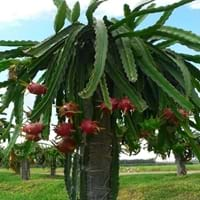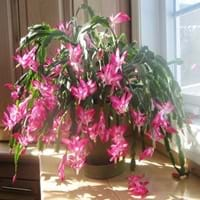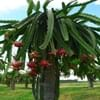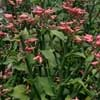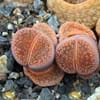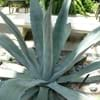Life Span
Perennial
Perennial
Type
Cactus or Succulent
Cactus or Succulent
Origin
North America, Latin America and the Caribbean, Central America, South America
North America, Latin America and the Caribbean, Central America, South America
Types
Not Available
Not Available
Habitat
tropical environments, Tropical regions
Coastal Mountains, Humid climates
USDA Hardiness Zone
Not Available
Not Available
AHS Heat Zone
Not Available
12-1
Sunset Zone
Not Available
Not Available
Habit
Not Available
Clump-Forming
Minimum Height
Not Available
Minimum Width
Not Available
Flower Color
Not Available
Purple
Flower Color Modifier
Not Available
Not Available
Fruit Color
Red, Salmon
Pink
Leaf Color in Spring
Not Available
Green, Dark Green
Leaf Color in Summer
Not Available
Green, Dark Green
Leaf Color in Fall
Not Available
Green, Dark Green
Leaf Color in Winter
Not Available
Green, Dark Green
Leaf Shape
Lanceolate
Toothed
Plant Season
Not Available
Spring, Summer, Fall, Winter
Sunlight
Full Sun
Partial Sun, Partial shade
Growth Rate
Not Available
Fast
Type of Soil
Loam, Sand
Loam, Sand
The pH of Soil
Acidic, Neutral, Alkaline
Acidic, Neutral
Soil Drainage
Well drained
Well drained
Bloom Time
Not Available
Not Available
Tolerances
Deer resistant, Drought, Heat And Humidity, Salt, Shade areas, Wet Site
Not Available
Where to Plant?
Container, Ground, Pot
Container, Ground, Pot
How to Plant?
Semi-hardwood cuttings, Stem Cutting
Stem Planting, Transplanting
Plant Maintenance
Medium
Medium
Watering Requirements
Water slowly, and allow to dry completely between soakings
Average Water Needs, Do Not over Water, Never Over-water
In Summer
Lots of watering
Lots of watering
In Spring
Moderate
Moderate
In Winter
Less Watering
Average Water
Soil pH
Acidic, Neutral, Alkaline
Acidic, Neutral
Soil Type
Loam, Sand
Loam, Sand
Soil Drainage Capacity
Well drained
Well drained
Sun Exposure
Full Sun
Partial Sun, Partial shade
Pruning
Dispose of diseased portions, Remove damaged leaves, Remove dead branches, Remove dead leaves, Remove dead or diseased plant parts
Prune if you want to improve plant shape, Requires little pruning
Fertilizers
15-30-15 liquid fertilizer, Fertilzer with low nitrogen content
All-Purpose Liquid Fertilizer
Pests and Diseases
Bacterial Stem Rot, Birds, Brown Rot
Red blotch
Plant Tolerance
Deer resistant, Drought, Heat And Humidity, Salt, Shade areas, Wet Site
Drought
Flower Petal Number
Not Available
Not Available
Showy Fruit
Not Available
No
Edible Fruit
Not Available
No
Foliage Texture
Bold
Bold
Foliage Sheen
Not Available
Glossy
Attracts
Not Available, pollinators
Not Available
Allergy
Not Available
Eye irritation, sneezing
Aesthetic Uses
Showy Purposes
Beautification, Landscape Designing, Showy Purposes
Beauty Benefits
Anti-ageing, Good for skin, Making cosmetics
Not Available
Environmental Uses
Food for animals
Air purification
Medicinal Uses
anti-cancer, anti-inflammatory, Antitumor, Diabetes, Healing, Nutritive, Skin wounds
Not Available
Part of Plant Used
Flowers, Fruits, Seeds
Leaves
Other Uses
Cosmetics, Food for animals, Used as a nutritious food item, Used for its medicinal properties
Decoration Purposes, Showy Purposes, Used as Christmas Tree, Used as Ornamental plant
Used As Indoor Plant
Yes
Yes
Used As Outdoor Plant
Yes
Yes
Garden Design
Container, Houseplant, Rock Garden, Wall
Container, Houseplant, Rock Garden, Wall
Botanical Name
Hylocereus undatus
SCHLUMBERGERA x buckleyi
Common Name
Pitahaya, Dragon Fruit
Thanksgiving Cactus, Crab Cactus
In Hindi
hylocereus
क्रिसमस कैक्टस
In German
hylocereus
Weihnachtskaktus
In French
hylocereus
Cactus de Noël
In Spanish
hylocereus
Cactus de Navidad
In Greek
hylocereus
Χριστούγεννα Cactus
In Portuguese
hylocereus
Cacto de Natal
In Polish
Hylocereus
Christmas Cactus
In Latin
Hylocereus
Nativitatis Cactus
Phylum
Magnoliophyta
Magnoliophyta
Class
Magnoliopsida
Magnoliopsida
Order
Caryophyllales
Caryophyllales
Family
Cactaceae
Cactaceae
Genus
Hylocereus
Schlumbergera
Clade
Angiosperms, Core eudicots, Eudicots
Angiosperms, Core eudicots, Eudicots
Tribe
Hylocereeae
Not Available
Subfamily
Cactoideae
Cactoideae
Number of Species
Not Available
Importance of Hylocereus and Christmas Cactus
Want to have the most appropriate plant for your garden? You might want to know the importance of Hylocereus and Christmas Cactus. Basically, these two plants vary in many aspects. Compare Hylocereus and Christmas Cactus as they differ in many characteristics such as their life, care, benefits, facts, etc. Every gardener must at least have the slightest clue about the plants he wants to plant in his garden. Compare their benefits, which differ in many ways like facts and uses. The medicinal use of Hylocereus is anti-cancer, anti-inflammatory, Antitumor, Diabetes, Healing, Nutritive and Skin wounds whereas of Christmas Cactus is Not Available. Hylocereus has beauty benefits as follows: Anti-ageing, Good for skin and Making cosmetics while Christmas Cactus has beauty benefits as follows: Anti-ageing, Good for skin and Making cosmetics.
Compare Facts of Hylocereus vs Christmas Cactus
How to choose the best garden plant for your garden depending upon its facts? Here garden plant comparison will help you to solve this query. Compare the facts of Hylocereus vs Christmas Cactus and know which one to choose. As garden plants have benefits and other uses, allergy is also a major drawback of plants for some people. Allergic reactions of Hylocereus are Not Available whereas of Christmas Cactus have Eye irritation and sneezing respectively. Having a fruit bearing plant in your garden can be a plus point of your garden. Hylocereus has no showy fruits and Christmas Cactus has no showy fruits. Also Hylocereus is not flowering and Christmas Cactus is not flowering . You can compare Hylocereus and Christmas Cactus facts and facts of other plants too.
